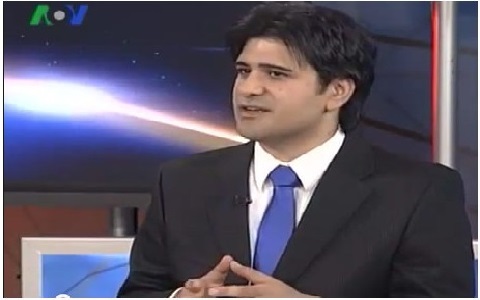By Dr. Majid Rafizadeh
Large protests and demonstrations have erupted in Iran. For four consecutive days, many Iranians have taken to the streets to express their anger and frustration with the authorities.
The demonstrations originated with economic concerns, like so many of the recent protests the world has witnessed in Iran. This is also an expression of the people’s frustration with the clerical regime due to the increasing wealth disparities between the people and those in government.
The protests, which began with merchants, traders and shopkeepers in the Grand Bazaar in Tehran, have spread to other major cities and markets, such as in Tabriz in the north, the Aladdin and Charsou centers, as well as Qeshm Island. Many people have also marched on the country’s Parliament.
The detailed and nuanced factors behind these vast protests are multi-faceted. To begin with, one of the underlying impetuses is the dire economic situation, and particularly the widespread financial corruption that has been permeating the regime for a long time. High inflation, rapidly rising prices, and Tehran’s extremely volatile stock market are among the major factors that are pushing Iran’s economy into a critical recession.
In addition, Iran’s national currency, the rial, has again dropped to historic lows in Tehran’s street market. One US dollar, which used to equal approximately 35,000 rials in November of last year, now buys you nearly 90,000 rials. Such a steep devaluation of any currency in the world is unprecedented. This makes the financial situation of ordinary people much more severe and strenuous.
To make things worse, the regime’s agents, who are referred to as the government’s mafia bands, have reportedly been
buying gold coins and dollars at the government rate (which is currently around 42,000 rials in Iran’s banks) and then selling them in the streets of Tehran for almost double the price. A member of Iran’s parliament, Alireza Salimi,
pointed out recently: “They give 4,200 toman (42,000 rials) a dollar to some special individuals to import goods and sell them at 8,000 toman a dollar. An interest of 110,000 billion tomans (roughly $26 billion) has been created.
If Iran's underlying economic problems continue, regime could face a nationwide uprising.
Dr. Majid Rafizadeh
Surprisingly, some state-controlled media outlets have also become frustrated with the widespread corruption across the political spectrum. For example, Persian media outlet Entekhab
wrote on Saturday: “Where in the world do revelations of 50 people conducting a sale of 380,000 coins come up and the government gives no attention to it? Why don’t you disclose those that smuggle the gold coins as well as the people who back them?
More importantly, instead of bolstering Iran’s economy and redistributing the national wealth, Iran’s Islamic Revolutionary Guard Corps and the Office of the Supreme Leader are continuing to hemorrhage billions of dollars on the IRGC’s military adventurism in the region by financially supporting Bashar Assad’s regime and arming Shiite militias and various proxy groups across the Middle East.
It is worth noting that, when it comes to national resources, Iran is one of the wealthiest countries, having the respective second and fourth-largest gas and oil reserves in the world.
Furthermore, Iran’s banking system, which pays or charges one of the highest interest rates in the world (between 20 and 30 percent), is also filled with corruption. The system is designed to benefit the top of the financial pyramid, i.e., the wealthy and the regime’s officials.
The ongoing protests also highlight the fact that the Iranian regime has not taken any concrete steps toward addressing the people’s grievances. Instead, the Iranian leaders are pointing fingers at other state and non-state actors. President Hassan Rouhani pointed a finger at US President Donald Trump for withdrawing from the Joint Comprehensive Plan of Action, commonly known as the Iran nuclear deal. Rouhani also accused the Trump administration of launching an “economic war” with Iran. But Tehran’s economic problems are deeply rooted in the system.
The Islamic Republic’s response to the huge protests has been to resort to the regime’s classic modus operandi of deploying hard power and threats. Brute force has been used to crush the demonstrations; police and anti-riot guards attacked and clashed with the protesters. Tear gas has been used against the people, and a “large number” of demonstrators have been arrested, according to judiciary officials. Ayatollah Sadeq Larijani, the judiciary chief appointed directly by Supreme Leader Ali Khamenei, also threatened the demonstrators by warning that “disrupting economic activities may entail the death sentence.
In conclusion, the Iranian regime has been incapable of meeting the country’s economic demands. Despite Rouhani’s promises of rooting out “corruption in the country’s administrative and economic system,” the situation is dire for much of the Iranian population. If the underlying economic problems — such as financial corruption at the top, misuse of public funds, the banking crisis, and economic mismanagement — continue, this could lead to a nationwide uprising.
- Dr. Majid Rafizadeh is a Harvard-educated Iranian-American political scientist. He is a leading expert on Iran and US foreign policy, a businessman and president of the International American Council. Twitter: @Dr_Rafizadeh
This article was first
published by arabnews




Comments
Post a Comment